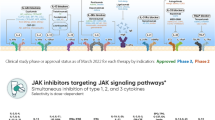Abstract
Previous studies in mice have shown that dehydroepiandrosterone (DHEA) increases the production of Th1-associated lymphokines, and of interleukin-2 (IL-2) and interferon-gamma (IFN-γ), by lymphocytes. However, there are no reports concerning the effect of DHEA on the production of Th2-associated lymphokines, IL-4 and IL-5, by lymphocytes in humans. We examined serum DHEA levels in patients with atopic dermatitis (AD), which is thought to be associated with a higher activity of Th2 cells than of Th1 cells. We also studied the effects of DHEA on the production of IL-4 and IL-5 by human lymphocytes. Serum DHEA concentrations in 47 adult male patients with AD aged 19–30 years were significantly lower than those of 53 age-matched healthy male controls. Preincubation of peripheral blood mononuclear cells (PBMCs) with DHEA reduced the IL-4 production by concanavalin A-stimulated PBMCs. Their IL-5 production also showed a tendency to decrease. These results suggest that DHEA may be one of the regulators of IgE synthesis and eosinophil proliferation in patients with AD and it may act by controlling IL-4, IL-5 and IL-2 production by lymphocytes.
Similar content being viewed by others
Author information
Authors and Affiliations
Additional information
Received: 12 November 1996
Rights and permissions
About this article
Cite this article
Tabata, N., Tagami, H. & Terui, T. Dehydroepiandrosterone may be one of the regulators of cytokine production in atopic dermatitis. Arch Dermatol Res 289, 410–414 (1997). https://doi.org/10.1007/s004030050213
Issue Date:
DOI: https://doi.org/10.1007/s004030050213




